![]()
Tue, March 08, 2011 | The Meir Amit Intelligence and Terrorism Information Center

The PRC's masthead. The Letter R superimposed on a kaffiyeh stands for "return; " inside it is a miniature map of "Palestine," symbol of the final goal, the establishment of a Palestinian state to replace the State of Israel.
Palestinian Return Centre: anti-Israeli Propaganda Center Affiliated with Hamas and Muslim Brotherhood
The Palestinian Return Centre: London-based center for anti-Israeli propaganda, affiliated with Hamas and the Muslim Brotherhood, outlawed in Israel. It promotes the demand of the Palestinian refugees to return as a way of destroying Israel. Senior PRC figures send flotillas and convoys to the Gaza Strip and transfer funds to Hamas.
Overview
The Palestinian Return Centre (PRC) is a Palestinian center for anti-Israeli propaganda, established in London in 1996. It is affiliated with Hamas and the Muslim Brotherhood and some of its senior figures are Hamas activists who found refuge in Britain.
Its foundation was based on rejection of the Oslo Accords, a strong denial of the right of the State of Israel to exist and the concept of the “right” of the Palestinian refugees and their descendents to return to the places abandoned in 1948, all to be used as tools to fight Israel and the peace process. The PRC holds intensive anti-Israeli propaganda activities in Britain, Europe and other countries around the globe and is an important factor in the network of organizations participating in the international campaign to delegitimize Israel.
The unequivocal connections between the PRC and Hamas, as described below, caused it to be outlawed in Israel. On December 27, 2010, the Israel Security Agency said in a statement that on December 5 Israeli Defense Minister Ehud Barak had signed an order outlawing the PRC as an “unlawful association because it is part of the Hamas movement.” The statement also noted that the PRC was a coordinating organizational arm of the Hamas movement in Europe, and that its activists, who were senior Hamas figures, were working to promote the movement’s objectives in Europe and were in direct contact with Hamas senior figures, including movement heads in Damascus.[1]
The PRC’s activity centers around disseminating and inculcating the message that all the Palestinian refugees have the “right to return” to Israel (estimated by the PRC at five million).[2] Their return to Israel is represented as a “sacred” personal and collective “right,” anchored in international law, which no one can bargain with or cede.
The demand for the return to Israel of millions of refugees is regarded by the PRC not only as a method which has been proved to sabotage every peace process, but as an important component in a long-range strategy which will eventually lead to a change in the demographic nature of the State of Israel as a Jewish state[3] and serve the overall goal of establishing an Islamic Palestinian state on all of “Palestine,” (i.e., the territory of the State of Israel.) Focusing on the “right of return” is the common denominator of all the organizations and individuals around the globe rejecting the Zionist-Israeli model, and has become the motto of the anti-Israeli campaign. Those who employ it ignore the fact that after the State of Israel was founded Jews were either expelled of fled from the Arab countries.
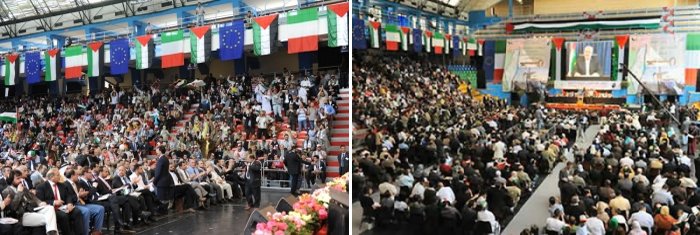
One of the PRCs anti-Israeli propaganda activity is holding annual Palestinian conferences in various European countries. They focus Arab-Muslim communities in Europe on the ideology and political agenda of Hamas and the Muslim Brotherhood. Above, Ismail Haniya, head of the de facto Hamas administration in the Gaza Strip, speaks at the seventh annual conference, held in Milan in 2009 (PRC annual Palestinian conference in Europe website).
The PRC was founded in 1996 in rejection of the Oslo Accords and everything they symbolized. The founder and head ideologue was apparently Salman Abu Sitta, born into a family from Beersheba which fled to the Gaza Strip. He was an independent member of the Palestinian National Council between 1974 and 1993, studied in Egypt and from there went to London, where he received a doctorate in civil engineering from London University. In 1993 he resigned from the Palestinian National Council because he rejected the Oslo Accords, and in 1996 founded the PRC. Today he lives in the United States. He does not belong to the PRC but is active in spreading anti-Israeli propaganda and defaming Israel by comparing it to Nazism.
During the fourteen years of its existence the PRC has become ideologically close to Hamas and the Muslim Brotherhood in Britain (the center of the Muslim Brotherhood’s political, media and economic activities in Europe). The PRC has not openly stated its strong connections to Muslim Brotherhood-style extremist Islam, but our information and large amounts of circumstantial evidence presented in this study support the existence of that connection.
For example, the PRC’s radical Islamic ideology and political agenda are identical with those of the Muslim Brotherhood; members of the PRC’s board of trustees and senior functionaries had or have roles in various Muslim Brotherhood-affiliated institutions in Britain; the PRC participates in anti-Israeli activities also attended by prominent activists from the Muslim Brotherhood and other groups and organizations; Zaher al-Birawi, senior PRC figure, is program director and chief presenter of London’s Muslim Brotherhood-affiliated Al-Hiwar TV channel; an Egyptian jurist named Subhi Salah, a Muslim Brotherhood member of the Egyptian parliament till 2010, was at the same time unofficially a PRC member (according to his website).
Three members of the PRC’s board of trustees are Hamas activists who found refuge in Britain in the 1990s. They do not admit to their links with Hamas, in our assessment to avoid complications with British law. Prominent among them are three Hamas activists: Zaher al-Birawi, chairman of the PRC’s board of trustees; Majed al-Zeer, PRC general director; and Sheikh Majdi Akeel, a member of the PRC’s board of trustees.[4]
The above three Hamas activists are involved in extensive anti-Israeli activities aimed at providing Hamas with ideological, political and practical support. For example, Zaher al-Birawi was active in dispatching convoys to the Gaza Strip through George Galloway’s organization, Viva Palestina, with the political goal of strengthening the de facto Hamas administration. Majed al-Zeer participated in anti-Israeli events in European cities and in Damascus in support of Hamas, its political agenda and its strategy of terrorism. Sheikh Majdi Akeel is an activist of Interpal, which sends money to Hamas, and accompanied one of the Viva Palestina aid convoys to Hamas in the Gaza Strip[5] (See Appendix II for information about PRC activists). In addition to those three, according to our information Arafat Madi Shukri, PRC operational director, is also a Hamas activist who lives in Britain and is the chairman of the ECESG (a European umbrella organization which sends flotillas to the Gaza Strip).
Additional conclusions about the PRC’s nature and modus operandi revealed in preparing this study:
1) The PRC’s view of the so-called “right of return” of the Palestinian refugees is as follows:[6] The return of the Palestinians to Israel is a “right” and not a demand, according to PRC claims. Adherence to the “right of return” promotes the final goal of the “restoration” of all of the land of “Palestine,” from the Mediterranean Sea to the Jordan River, and the establishment of an Islamic Palestinian state instead of the State of Israel.[7] Returning all the Palestinian refugees to Israel and to the places and houses in which they lived in 1947-8 is, according to PRC claims, “a basic personal and collective right” and a “sacred right” anchored in international treaties[8] and the holy books of the three monotheistic religions. Thus, according to the PRC, no one has the right to waive the “right of return” or to reach a compromise regarding the partial return of the Palestinians. In consequence, the PRC rejects outright the peace process, ties the hands of the Palestinian Authority, which negotiates with Israel for the Palestinians, and advocates Hamas’ strategy of the “liberation of Palestine” through jihad and “resistance” [i.e., terrorism and violence] rather than political negotiations.
2) The PRC’s organizational structure: As opposed to other anti-Israeli umbrella organizations, which operate as networks, the PRC has a hierarchical structure and broad physical and human facilities based in London. It is governed by a board of trustees of five men. The Centre has a general director and a center which employs “researchers” and propagandists. Its offices are located in north central London in an office building shared with other groups (mainly Palestinian and Muslim). Its address and contact information are the following:
The Palestinian Return Centre (PRC)
100H Crown House
North Circular Road
London NW10 7PN
The United Kingdom
Tel. No.: 00 44 (0) 2084530919
Fax: 00 44 (0) 2084530994
Email: info@prc.org.uk
Website: prc.org.uk
3) PRC support for terrorism and terrorist organizations: To avoid complications with the British authorities, the PRC is generally careful, especially when issuing statements in English, not to explicitly support terrorist activities and terrorist organizations such as Hamas and Hezbollah. In statements in Arabic however, aimed at Arab-Muslim target audiences, the PRC is less careful and often expresses solidarity with the Palestinian terrorist campaign (“the Al-Aqsa intifada”), with Hamas’ path of jihad and with the Hamas leadership. For example, at its annual European conferences, which the PRC has been organizing since 2003, Ismail Haniya, a senior Hamas figure, has delivered speeches three times. The conferences support the path of “resistance” and jihad (i.e., terrorism), and praise the shaheeds, the wounded and the imprisoned of the terrorist organizations. The PRC’s publications support jihad and the “resistance” and glorify the terrorist shaheeds who died during the Palestinian terrorist attacks, especially Hamas founder and leader Ahmed Yassin. In addition, the PRC organized a campaign to express solidarity with the Al-Aqsa intifada;[9] Majid al-Ziyad, a senior PRC figure, participated in the conference in Damascus in November 2008, which supported the “culture of resistance” (i.e., the culture of terrorism). Interviewed by Al-Jazeera TV on May 29, 2010, he stressed the need for “military resistance” [i.e., terrorism] in “Palestine.” Dr. Daoud Abdallah, another senior PRC figure, participated in the conference in Istanbul in 2009 and signed a declaration in support of the path of jihad (“the Istanbul declaration”).[10]
4) Overview of PRC activities:
a) Since its establishment, the PRC has been prominent among anti-Israeli organizations engaging in intensive propaganda activities aimed at inculcating the idea of the “right of return” and defaming Israel by representing it as an “apartheid state.” It also seeks to turn Israel into a pariah state by accusing it of the “ethnic cleansing” of the “Palestinian” population, both in the past and present (the PRC even issued a book entitled The Ethnic Cleansing of Palestine). The PRC’s vicious anti-Israeli propaganda campaign is waged in Britain, continental Europe and other countries around the globe.
b) The PRC has three main target audiences in Britain: British politicians, especially in Parliament, where it is primarily in contact with members of the Labour Party; university students, among whom PRC activists participate in events related to the conflict and deliver anti-Israeli speeches; the British public in general, especially the social and cultural elite. PRC activists attend events such as “Jerusalem Day” and “Naqba Day,” react publicly to developments in the Israeli-Palestinian conflict and hold demonstrations and rallies in London and other cities in Britain. In addition, the PRC holds conferences, workshops and seminars. It produces movies, issues various publications and runs a Palestinian cultural center in London.
c) Since 2003 the PRC has held an annual anti-Israeli European conference called “the annual conference of Palestinians in Europe.” The conferences are attended by PRC activists, representatives of the Arab and Muslim communities in Europe, Hamas and Muslim Brotherhood activists and representatives of the European funds and foundations which finance Hamas. Their agenda and themes focus on inculcating the idea that the so-called “right of return” is “sacred,” and that no Palestinian can waive it. The conferences negate the right of the State of Israel to exist, strongly oppose the peace process and support the path of jihad and “resistance” (i.e., terrorism). Ismail Haniya, head of the de facto Hamas administration in the Gaza Strip, delivered video-conferenced speeches at three of the conferences because he was banned from entering certain European countries (where Hamas is considered a terrorist organization).
d) On the international scene the PRC participates in conferences dealing with the Palestinian-Israeli conflict and the issue of the refugees, including conferences organized by the United Nations. The PRC exploits the venues as convenient forums for defaming Israel as an “apartheid country” and a “racist country,” and spreading propaganda for the “right of return.” Senior PRC activists and their activities were prominent at the UN’s Durban conference in 2001, which served as a platform for attacks against Israel’s legitimacy and a hate campaign against it.
e) The PRC has anti-Israeli activities planned for 2011, some of them in Britain, some of them in other European countries. They include the annual conference of Palestinians in Europe, a January rally in London to mark the second anniversary of Operation Cast Lead, an international conference in London in January dealing with the so-called “Naqba,” some 30 events dealing with the Palestinian prisoners, a discussion about a project to coordinate Palestinian activity in the West, and others.
5) Formulating media strategy to attack Israel’s legitimacy: At the third annual conference, held in Vienna in 2005, the PRC formulated a media strategy to inculcate the concept of the “right of return” and to undermine the legitimacy of the State of Israel in various broad target audiences in Europe. The following tactics were proposed by the conference workshops: stressing the “value of justice” (a term easily accepted by the European ear) as a tool for creating a sense of European solidarity with the Palestinian demand to return the refugees to Israel; using short, easy to remember slogans; using publications of new historians; increasing the number of demonstrations; stressing the distinction between Judaism and the “Zionist project,” (See Appendix IV), etc. The decisions made at the conference are important and relevant because they are implemented to this day by the PRC and other anti-Israeli organizations participating in the global campaign to legitimatize Israel.
6) Funding the PRC and its extensive activities: As opposed to other organizations participating in the global campaign to delegitimize Israel, the PRC maintains a vast physical and human presence. Establishing it, maintaining it and funding its extensive physical and human network demand, in our assessment, extremely large financial resources. The PRC claims that it is funded by donations from people who believe in its goals. However, in our assessment, even if it cannot be proved, the PRC has other sources of funds at its disposal, notably the Muslim Brotherhood and/or funds and foundations connected to it and to Hamas.
Senior PRC figures, among them Hamas activists, hold positions in other groups and organizations which spread anti-Israeli propaganda, transfer funds to Hamas and dispatch land and sea convoys to the Gaza Strip. Some of the organizations are affiliated with the Muslim Brotherhood and one with the extreme British left.
The PRC’s senior figures are deeply involved with both the ECESG and Viva Palestina, two organizations which make significant contributions to the land and sea convoy projects to the Gaza Strip. For example, Dr. Arafat Madi Shukri, the PRC’s director of operations, is also chairman of the ECESG, a European umbrella network which sends sea convoys. Majed al-Zeer is also apparently involved in ECESG activity. Zaher al-Birawi, a Hamas activist, is chairman of the PRC board of trustees, the spokesman (and in our assessment also a kind of liaison person with Hamas) of the convoys organized by Viva Palestina, the organization of extremist left-wing former British MP George Galloway. In addition, two senior PRC activists, Ghusan Faour and Hamas activist Sheikh Majdi Akeel, are key figures in Interpal, a British fund which is an important component in Hamas’ international fundraising effort; Interpal was designated as a terrorism-supporting institution in the United States and outlawed both there and in Israel.[11]
Connections of senior Hamas figures with Hamas and other British groups and organizations which support Hamas
A note on methodology
There were difficulties experienced in analyzing the PRC because like other organizations of its type, the PRC hides information which might expose its true nature as a branch of Hamas and the Muslim Brotherhood. In the PRC’s many publications it is hard to find reliable information about its structure, activists, sources of funding and connections with Hamas and the Muslim Brotherhood. One of the PRC’s primary interests is not to fall afoul of the authorities in Britain and other European countries where it operates.
In analyzing the PRC we used a variety of sources: The organization’s own publications and press releases, video clips taken at PRC conferences and during its activities, reports in the world media, interviews with its activists, etc. In addition, to understand what the “right of return” really means for the PRC, many of their texts in English and Arabic were analyzed, including a book (in Arabic) published by the organization documenting most of its annual European conferences.
To fully understand the PRC and its senior figures, we examined the pasts, actions and worldviews of the leaders. We found that several of them had strong links with Hamas and the Muslim Brotherhood, in both the past and present. We also examined the links between the PRC and other organizations and found that it collaborates with other organizations affiliated with Hamas and the Muslim Brotherhood, especially in Britain, and with British groups and individuals affiliated with the extreme left, which share a common anti-Israeli agenda.
This study examines the PRC’s position on the so-called “right of return.” To spotlight the political significance of that position in the overall context of the Palestinian-Israeli conflict, we present several examples, in footnotes, of an unofficial Israeli position. To present the Israeli position we used a working paper edited in 2010 by Prof. Ruth Gavison called “Returning the Palestinian refugees to the State of Israel.”
Contents
This study examines the PRC in the following areas:
1) The nature of PRC activity
2) A portrait of PRC senior figures
3) PRC collaboration with organizations participating in the global campaign to delegitimize the State of Israel
4) The delegitimization campaign against Israel reflected in the PRC’s annual Palestinian conferences in Europe
5) Anti-Israeli incitement, and support for terrorism as expressed in the PRC’s organ “The Return” (in Arabic and English)
6) The Muslim Brotherhood movement and its activities in Britain as a framework for PRC activities
The notice outlawing the PRC in Israel
Israel Security Agency Terrorism Portal
Translation:
On December 5, 2010 the Israel defense minister signed an order designating the Palestinian Return Centre as an organization unlawful in Israel.
The Centre, which was established in London in 1996, officially announced that its activity was meant exclusively to further the cause of the Palestinian refugees. However, in reality it serves as the organizational and coordinating arm of the Hamas movement in Europe. Its activists, who are senior Hamas movement figures, work to promote the movement’s objectives in Europe and maintain direct contact with senior Hamas figures, including the movement heads in Damascus.
The Centre is headed by various Hamas activists, among them, Majed al-Zeer, Zaher Birawi and Majdi Akeel. Another is Ghassan Faour, who is also on the board of trustees of Interpal. Interpal was designated as a terrorist organization by both Israel and the United States because it is one of the main components in global network funding Hamas.
In recent years the Centre has had a leading role in the European Campaign to End the Siege on Gaza (ECESG), and led by Arafat Mahdi, one of its top activists, was involved in planning the violent May 2010 Mavi Marmara flotilla. Those actions were undertaken in collaboration with the Turkish IHH and other Hamas funds in Europe and elsewhere.
In addition, the Centre had been involved in initiating and organizing violent, radical activities against the State of Israel in Europe, activities meant to subvert Israel’s standing in European public opinion. To that end the Centre has organized conferences in many European countries attended not only by its own activists but by Hamas and Muslim Brotherhood activists from around the world, including representatives of funds and foundations which support Hamas in Europe, and representatives from Hamas in the Gaza Strip.
In recent years, recorded speeches have been broadcast at conferences, delivered by senior Hamas figures, including Ismail Haniya, head of the Hamas administration in the Gaza Strip, who were banned from entering Europe because the movement was outlawed by the European Union.
The Palestinian Return Centre’s activities are part of Hamas’ activities in the Palestinian communities in Europe in general and Britain in particular. They belong to the overall undertaking conducted by Hamas around the world to support its activities in the internal Palestinian arena.
Thus, as noted, on December 5, 2010, the defense minister outlawed the Palestinian Return Centre since it is part of Hamas.
(Website of the Israel Security Agency, www.shabak.gov.il[12])
This is the Overview of a study which appears in its entirety on the ITIC website in Hebrew. The English translation will be posted in the near future.
Notes:
[1] Israel Security Agency website, December 29, 2010, IDF Spokesman’s website, December 27, 2010).
[2] UNRWA, which defines the concept of “Palestinian refugee” in the broadest possible terms, reported in 2008 that it had dealt with 4.7 million people.
[3] Documents from the negotiations between Israel and the Palestinians from the era of former Israeli Prime Minister Ehud Olmert exposed by Al-Jazeera TV showed that the Palestinian Authority was well aware of the real significance of the refugees’ “return” to Israel. Mahmoud Abbas, meeting with a Palestinian support group for the negotiations (NSU) said, “On numbers of refugees, it is illogical to ask Israel to take 5 million, or indeed 1 million – that would mean the end of Israel. They said 5000 over 5 years” (Report of Mahmoud Abbas-NSU meeting, March 24, 2009).
[4] All three are listed as Hamas activists in the Israel Security Agency announcement outlawing the PRC in Israel (ISA website, December 29, 2010). The three actively promote Hamas’ agenda and support the movement financially, political and with regard to propaganda.
[5] For further information see the February 24, 2010 article, Britain as a Focus for Hamas’ Political, Propaganda and Legal Activities in Europe.
[6] The Israeli position is that the Palestinian refugees, and certainly their descendants, do not have a “right of return” either under general public international law or according to sources dealing with the specific issue of the Palestinian refugees. Israel also states that there is no precedent for a solution to an ongoing conflict between two ethnic groups which recognizes the return of one of them to the territory of a country which is supposed to absorb them. In addition, there is no precedent for a solution by which other ethnic groups implements their right to self determination in a way that will upset the majority-minority relations of a country or threaten to destabilize that country. It is also Israel’s position that the Palestinian refugees were neither rehabilitated nor absorbed into other Arab countries because those countries do not recognize the State of Israel, and therefore there is no justification for imposing the absorption of those refugees in Israel (Yaffa Zilberschatz and Namra Guron-Amitai, “Returning the Palestinian refugees to the State of Israel,” (Hebrew), a position paper edited by Prof. Ruth Gavison, Matzila publishing, 2010, p. 14). Israel also states that it is impossible to ignore the problem of the Jewish refugees who were expelled from the Arab states and absorbed by the State of Israel, the homeland of the Jewish people. As opposed to many other issues belonging to the Israeli-Palestinian conflict, these are accepted by most of Israel’s political leadership and Israeli society.
[7] Based on data from UNRWA and the Israel Central Bureau of Statistics (valid through 2008), the full implementation of the Palestinian’s so-called “right of return” would potentially increase the population of the State of Israel by 62.6%, and 50.9% of the population would be Arab. That would nullify the UN Partition Plan of 1947 and undermine the realization of both Jewish and Arab (“Palestinian”) self determination as separate countries (“Returning the Palestinian refugees,” p. 33).
[8] The UN resolutions regarding the Palestinians do not give the Palestinian refugees the “right of return” to the territory of the State of Israel. The main resolution, the one on which the Palestinians base their claims, is UN General Assembly Resolution 194 III, passed in 1948. It proposes a way of ending the conflict by establishing a reconciliation committee. While the return of the refugees is mentioned, it is part of a comprehensive plan and not a “right” given to the refugees, especially in view of the fact that the resolution does not use the term “right.” Later resolutions note the right of the Palestinian people to self-determination and the right of the Palestinians to return to their houses. However, Security Council resolutions 237 and 242, passed in 1967, and 338, passed in 1973, call for a just solution for the refugee problem, but do not mention the “right of return.” The Security Council resolutions, and not anti-Israeli resolutions passed by the General Assembly, are the ones binding the relations between Israel and the Palestinian refugees. That is because the Oslo Accords, signed by both sides, give their adoption by both sides a binding force (“Returning the Palestinian refugees,” p. 10).
[9] From a promotion video produced by the PRC and posted on its website and on YouTube. The narrator states that the PRC organized a “solidarity campaign with the Al-Aqsa intifada.” We have no additional information beyond what was noted in the video.
[10] Following PRC senior figure Dr. Abdallah’s signing of the Istanbul declaration, the British authorities demanded he resign his position as deputy director general of a Muslim organization called the Muslim Council in Britain (MCB), which was supported by the British government. They claimed that at the conference he represented the MCB. He rejected the demand, claiming that he had signed the declaration representing only himself, and not as representing the MCB. Following the incident the British authorities ended governmental support of the MCB.
[11] Interpal was a member of the Union of Good, an umbrella organization of dozens of Islamic funds and foundations around the world which transfer money to Hamas. The English Charity Commission, which inspects charitable organizations in Britain, demanded that Interpal completely cut its connection with the Union of Good (and according to claims by senior Interpal figure Issam Yousef, it did so in March 2009).
[12] The English version of the announcement was translated by the ITIC. In response to the outlawing of the PRC in Israel, MEMO (an anti-Israeli organization in London headed by Dr. Daoud Abdallah, senior PRC figure) issued a statement. According to it, the PRC “is a legitimate British organization.” It also said that the PRC and other pro-Palestinian organizations operating in Britain “have never functioned below the radar of Britain’s security and anti-terrorism authorities, government and charity regulator. They are well-known organizations led by well-known people; they host high-profile conferences and seminars in the Houses of Parliament with cross-precisely because of such openness that they have gained popular support not only in Britain but also in Europe” (MEMO, 31 December, 2010).



 RSS
RSS

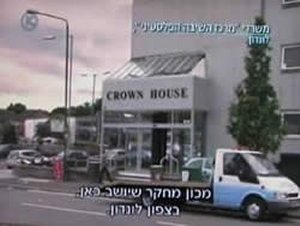
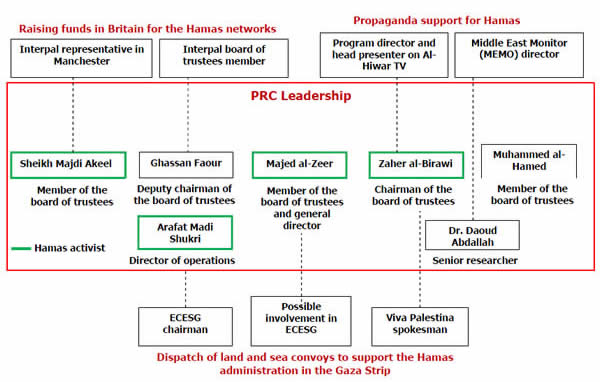


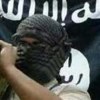
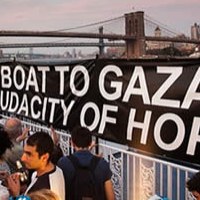

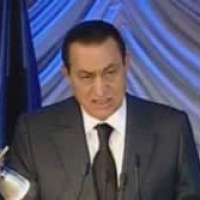




#Palestinian Return Centre: anti-Israeli Propaganda Center Affiliated with #Hamas and Muslim Brotherhood | #Israel #UK http://j.mp/gxIgjR
#Palestinian Return Centre: anti-Israeli Propaganda Center Affiliated with #Hamas and Muslim Brotherhood | #Israel #UK http://j.mp/gxIgjR
One of the major weapons in this propaganda war against Israel is the “Remember these Children” website which compares the numbers of Arab children who have been killed in the conflicts to the number of Jewish children murdered by terrorists. The Arab list totals 1,437 since 2000 and the Jewish list totals 130. Not withstanding that such reporting is unsubstantiated, After visiting the site, I noticed that according to this report, most of the Israeli children were murdered in drive by shootings and human bombs exploding themselves in restaurants, buses and markets. In other words, the Arab terrorists targeted those children and murdered them in cold blood. For all of the Arab children, on the other hand, the site identifies the causes of death as gun shot wounds or explosions during the firefights with Arab Hamas fighters. What were their children doing in the middle of a war zone? That is clear and convincing evidence that the Hamas thugs where using the local children as human shields. Soldiers are trained to return fire when fired upon. The bushwhacking urban guerrillas who fire at enemy troops from a neighborhood full of children are the ones causing the deaths of those children. More at http:moshesharon.worpress.com
@nursetom
Please, avoid multiple topic posts. Read our comment rules.